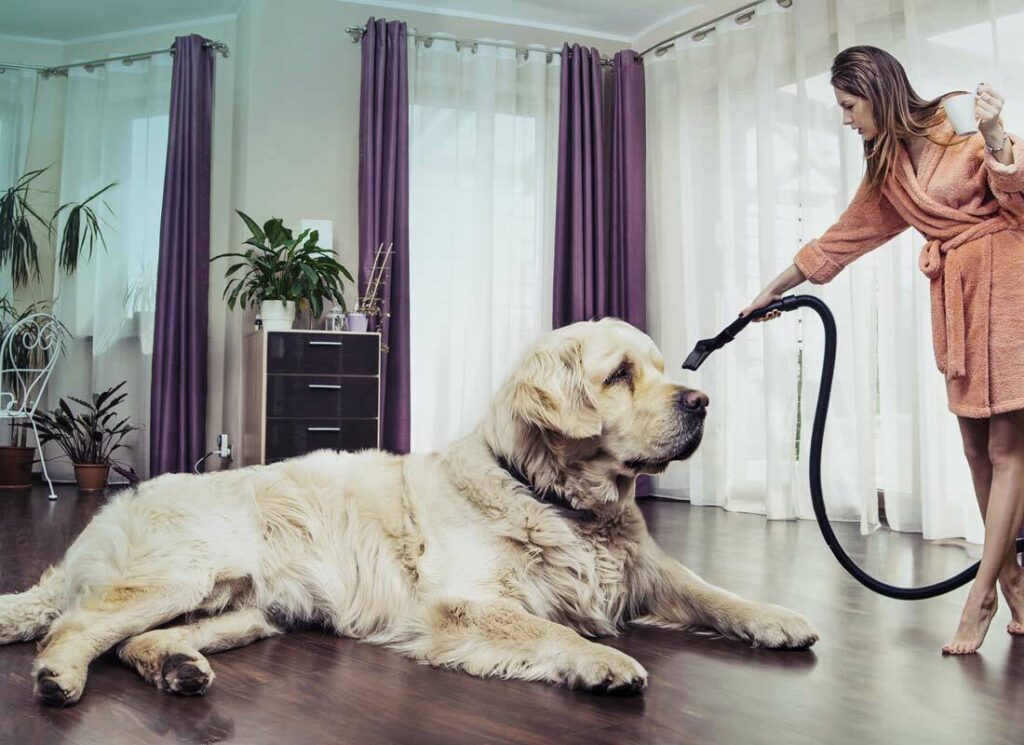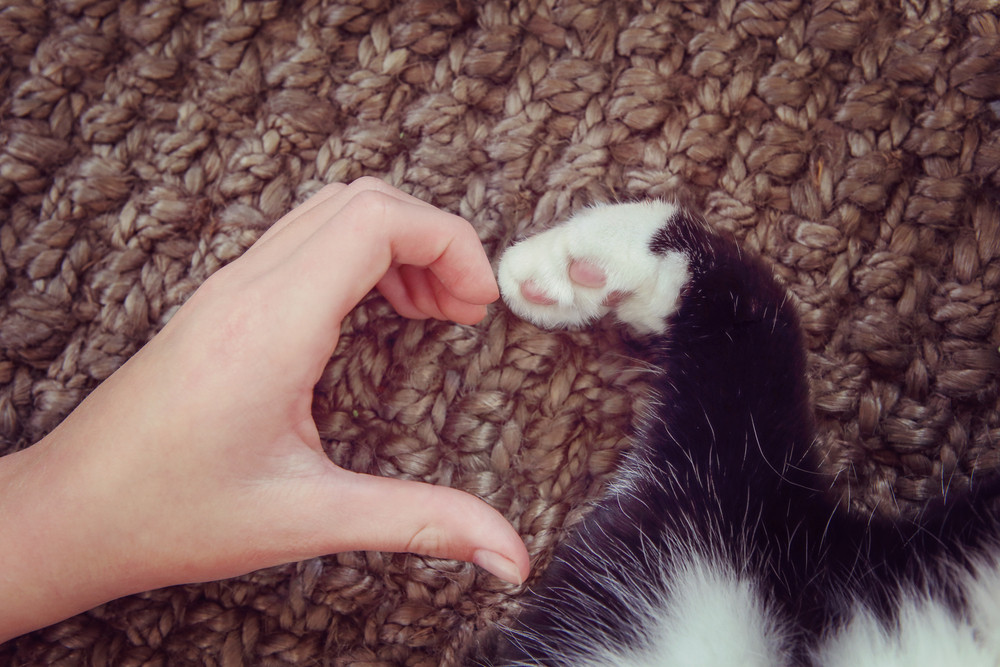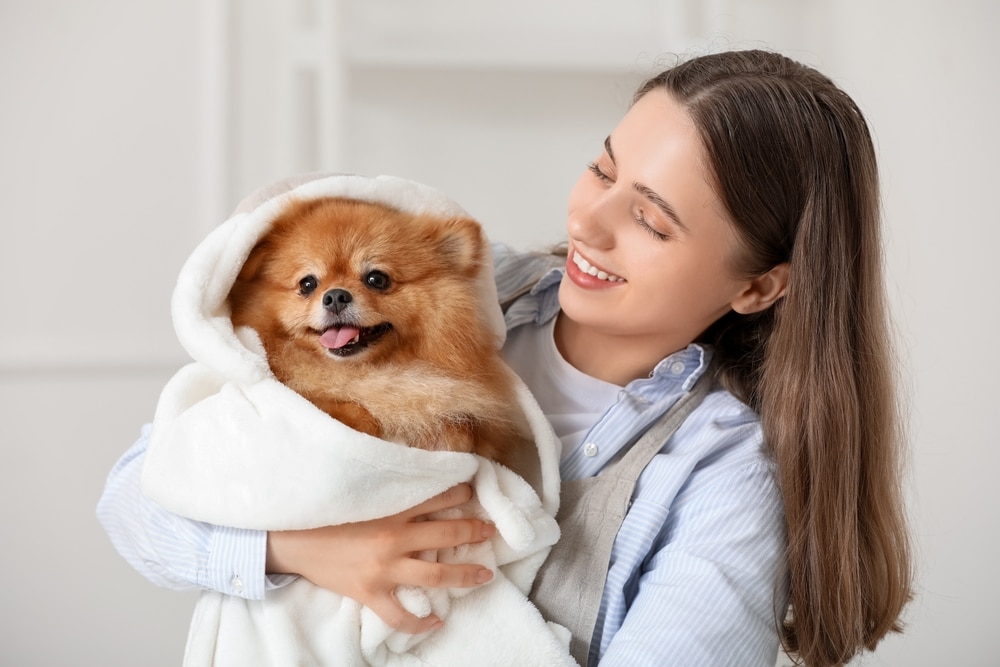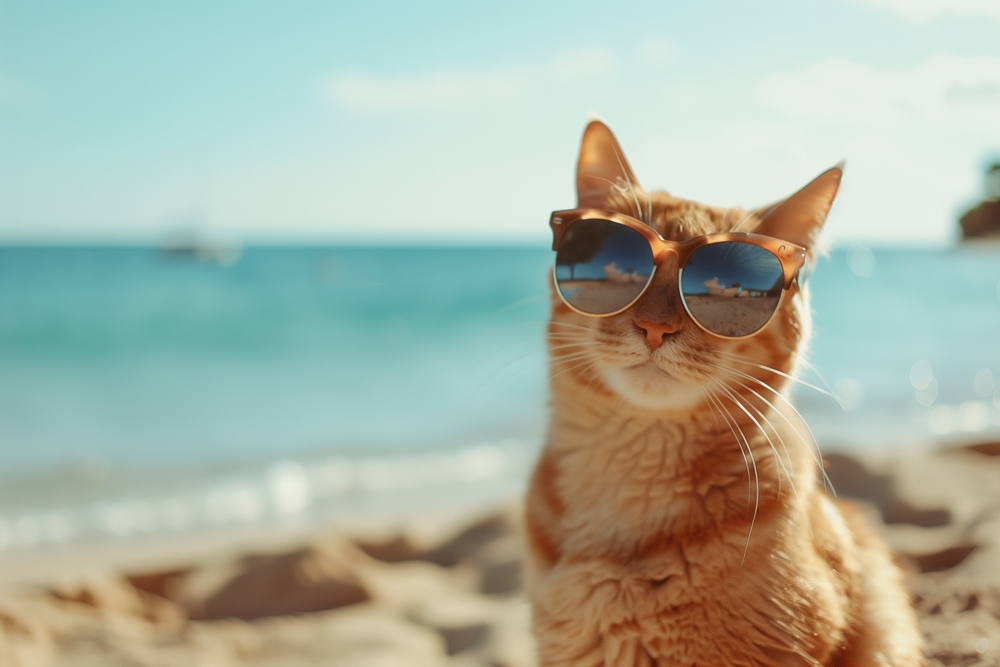With the warmer weather upon us, all dog owners knows what this means- shedding! Unless your lucky enough to own a dog that doesn’t shed you’re more than likely going to need a great brush to get rid of the unwanted hair, before it ends up all over the couch!
With so many dog shedding brushes and dog grooming tools available, it’s challenging to try to figure out which one is best for your shedding dog.
34,239. That’s the number of results you got when you do a quick Amazon.com search for dog brushes.
That’s a lot of brushes to have to click through before finding the right one for your shedding dog.
A dog brush is the most basic grooming tool for any groomer to have. But, with so many dog brush options available, it’s challenging to try to figure out which one is best. Read our helpful guide on how to select the right brush.
Read our helpful guide on how to select the right brush and make shedding season a breeze.
Dog Grooming Tools:
Slicker brush
Slicker brushes have rows of thin wire pins close together which help remove loose fur and detangle. It’s typically in a rectangular shape and the wires are angled slightly to not scratch the skin.
When using a slicker brush, you need to be careful not to use too much pressure. Because of the wires, it can irritate the dog’s skin.
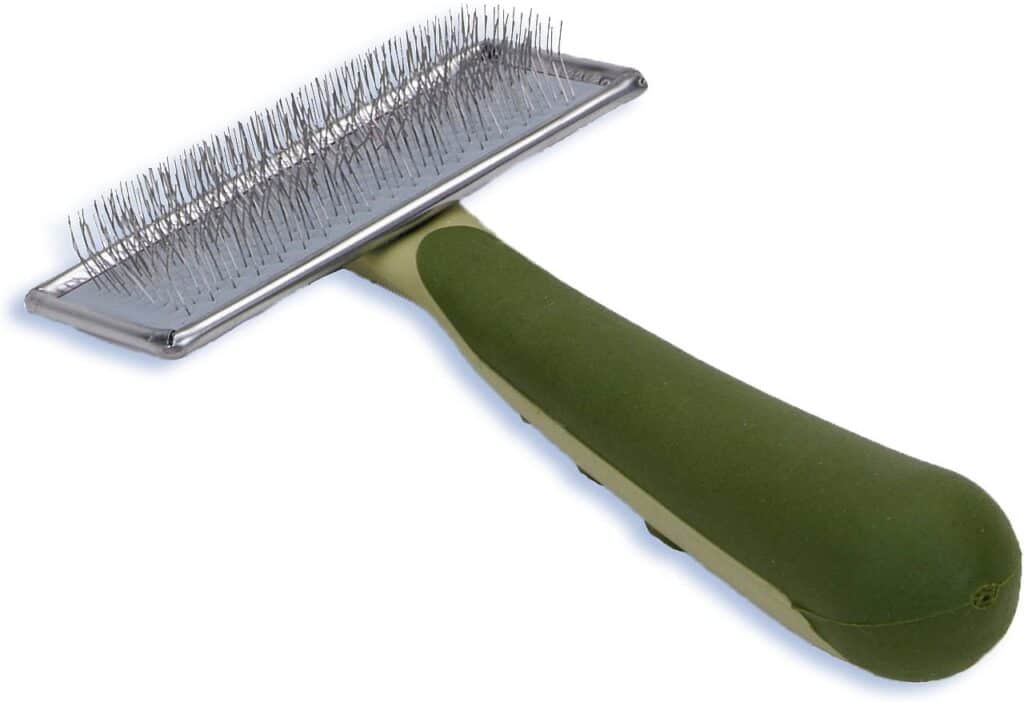
Rake
A rake brush is the best brush to use to get into long and heavy coats. (And no, I am not talking about a garden rake.)
Rakes are brushes designed to remove tangles and dead undercoat near the dog’s skin. They are often shaped like a shaving razor and feature one or two rows of tightly-spaced pins.
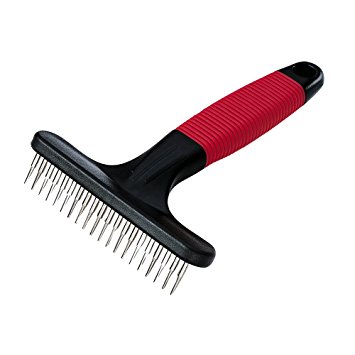
Pin brush
A pin brush is a shaped like paddle brush with long, flexible pins. They are often plastic or rubber. This brush is used to get debris and hair out from your dog’s coat.
These are usually used on long fur coats. The bristles are farther apart to allow the coat to be brushed easily.
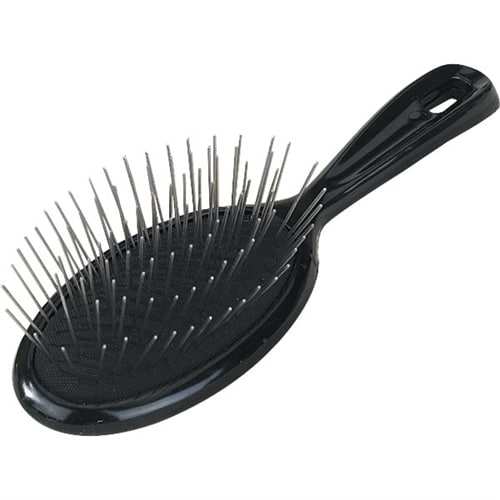
Bristle brush
The bristle dog brush is best for short-haired dogs. This brush has soft bristles close together that will bring out the shine in your dog’s coat.
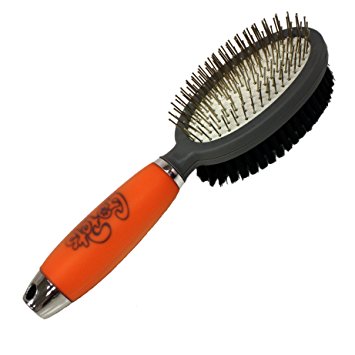
Stripping comb
A stripping comb has extra fine stainless steel wires that are close together. This comb trims out the undercoat to remove loose fur without pulling. It’s great for wiry coats.
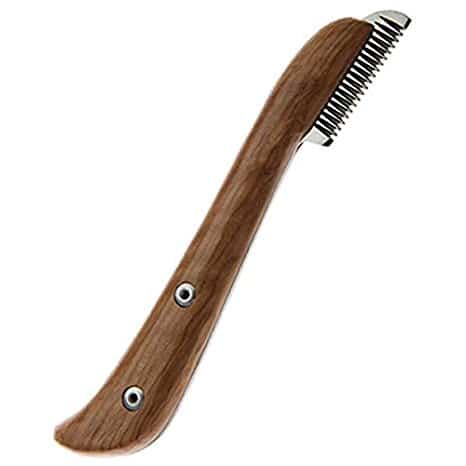
Soft Slicker Dog Brush
This dog brush has reinforced coated tips to not irritate your dog’s skin. It’s perfect for delicate areas such as underarms or paws. The soft slicker brush is one of the few brushes recommended for curly haired dogs to fluff their fur.
Now that we have had a quick rundown on the basic brushes, here are the coat types used for each brush.
There are 4 different basic dog coat types. It’s important to know what brush is used for what coat. You wouldn’t want to use the same brush for a collie as you would a poodle.
Each breed has a unique coat. Use these specific brushes to meet their needs.
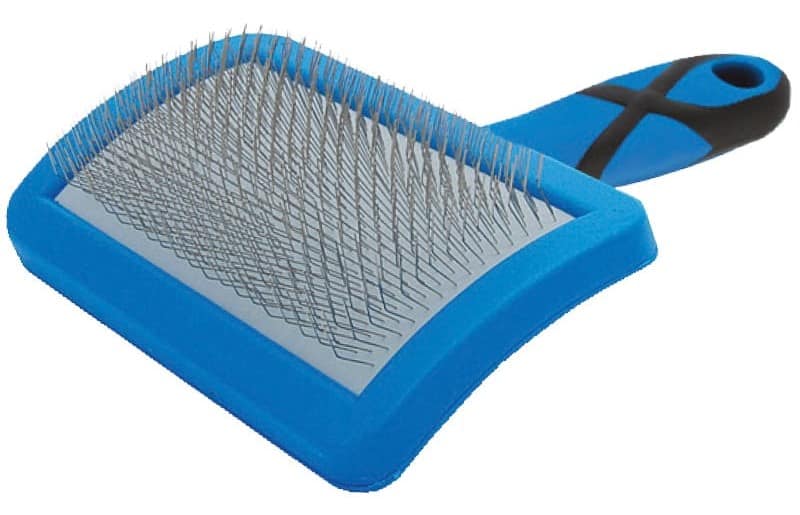
Dog Brush for Long Coats
Long coats can either be silky or course.
Bearded collies, St. Bernards, and Huskies are all examples of dogs that have long, coarse coats. These coats need to be brushed every day or every other day to prevent matting of the undercoat.
A slicker brush would be a good option for long-haired dogs because the wires are close together on a flat surface.
It’s important to remember to use caution when using a slicker brush. Because of the stiff wires placed close together, they can cause discomfort if you use too much pressure.
Another suggestion for a dog brush for long coats is a rake. Choose a rake that has bristles about the same length as your dog’s coat. Too short of bristles and it won’t do its job, and bristles too long will irritate your dog’s skin.
Silky coat breeds include Afghan Hound, Pekingese, and Setters. These dogs will require the same brushes as long, coarse coat dogs.
The difference will be the spacing between the bristles and the length of the bristles. The longer the coat, the more spacing there should be between the bristles. Also for silky coats, the bristles can be more flexible, compared to stiffer bristles for coarse coats.
You can also try a pin brush. Pin brushes work great on long, silky coats. You’ll find a lot of pin brushes at dog shows.

Smooth Coats
These are short-haired dogs that do not need to be brushed every day. They have short, smooth coats such as Boxers, Labradors, and German short-haired pointers.
While long coats require the most maintenance, smooth coats require the least. Use a bristle brush every once in a while to keep the coat looking shiny and the shedding to a minimum.
Use this dog brush once going against the lay of the coat, then again going with the coat. This will keep the smooth coat looking shiny and healthy.
Slicker brushes can also be used on short, smooth coats. Just be sure to get one with short bristles and be aware of the pressure applied when brushing.
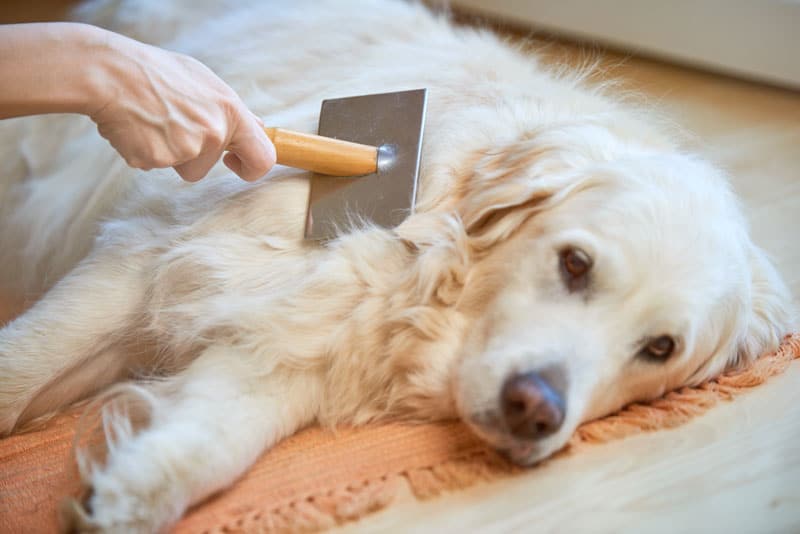
Wiry Coats
A wiry coat is what you will find on Schnauzers, Irish Wolfhounds, and most Terriers. The wire coat can also be known as the broken coat. These require plucking to prevent mats and tangles.
Use a slicker brush and a stripping comb. Stripping combs are particularly useful for wire coats because of their widely spaced stainless steel wires that will strip and detangle in one step.
Start with a stripping comb and run it along the back of the dog. This will thin out the overgrown coat and prevent mats and tangles.
After thinning out the coat with the stripper comb, use a slicker brush to brush the coat in layers.
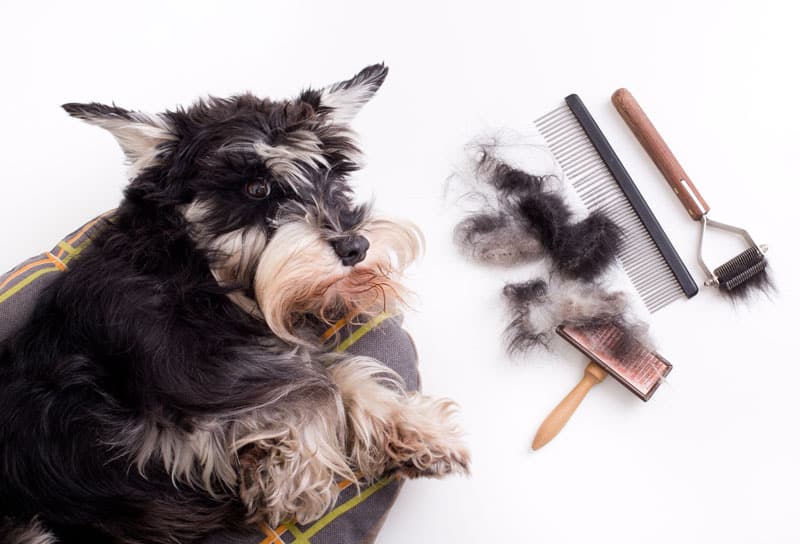
Curly Coats
Curly coats are a type of coat that grows constantly and should be trimmed or cut regularly. These coats are found in breeds such as Poodles, Spanish Water Dogs, and the Bedlington Terrier.
Because they are non-shedding dogs, curly coat dogs do not need to be brushed very often. The best dog brush to use is a soft slicker brush. Use the soft slicker brush to go against the fur to make it fluff up.
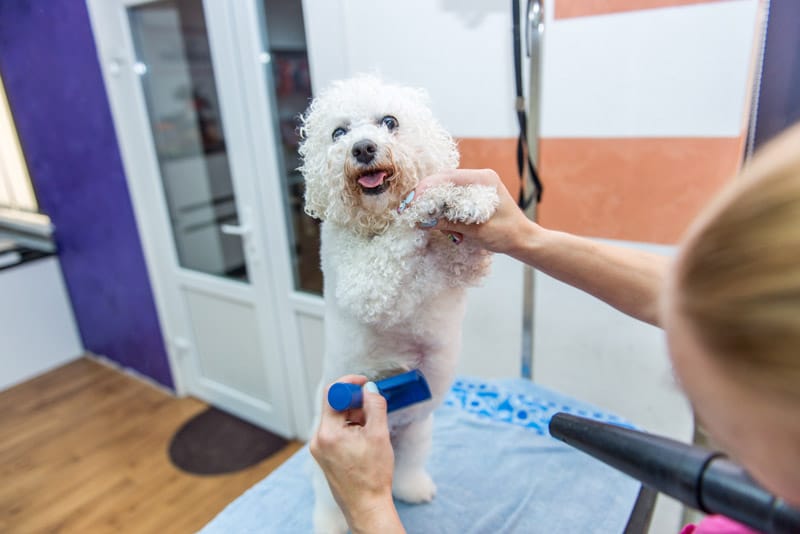
Brush Shedding Dogs With Confidence
After reading our quick dog brush guide, you will be able to brush any dog coat with confidence. Brushing and maintaining your dog should be a pleasant bonding experience between you and your furry friend.
Have a question? Don’t hesitate to contact the experts. We’re here to help with any grooming needs you have.
Happy brushing!
